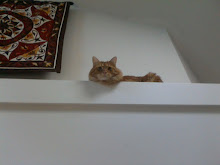
Many thanks to those who took time and trouble to respond to my previous posting. My sense of Hetzenberg is that it's an area which has seen a moderate degree of strife through invasion and minor border violations, and so would have a formal militia to respond to these. Those units raised in the frontier regions would possess at least some competence, perhaps even to the extent of fielding specialist skirmishers, but this competence would diminish the further one travels into the safe interior of the country. *
The militia is composed of those normally exempt from regular military service and those too old/too young to serve with the colors. It meets for drill and maneuvers two or three times a year, and the general pattern of a green uniform to the Saxon design is set by the Grossartiger Armeerat - but there are many variations within the pattern to be found in the various militia units. The inspiration (and historical precedence) for this lies in the French Garde Nationale during the Franco-Prussian War of 1870-71. Although the Garde's approved uniform design followed that of the regular army, all kinds of exotic and wonderful creations appeared.
*
The uniform shown above is for the City & District of Guggenheim, a prosperous community well able to provide its militia with uniforms. Parochial and guild pride has led to liberties being taken with the uniform colors though, with different parishes and guilds fielding companies in distinct variations. In the case of the company on the right, some enterprising fellow has even contrived to obtain breeches in the Prussian blue favored by IR 1 Sleibnitz of the regular army. The common theme to them all is the weskit, cuffs, turnbacks and cockade in the Guggenheim colors.
*
There is no set pattern for militia standards, although the Hetzenberg Cross of St. Ungulant always appears somewhere in the design. Much as in the American Civil War days, such standards are created and presented at special parades by various groups of patriotic citizens to their local militia company.






4 comments:
A very 'pleasant + perfectly logical' design, as always with you!
The 'background' you built for the Hetzenberg militia system and its 'varaible' efficiency according to the location = recent history is very sound.
Compliments,
Jean-Louis
Great idea, that 'Hungarian-like' braiding: very fitting for a locally-designed uniform incorporation some 'traditional' feature of the regional 'folkloric' civilian costume....
As for possible 'light skirmishers',
'French in India' could be an original source of inspiration. I believe "1st Corps" have a few (almost) corresponding minis.
An alternative for 'lights' could be Napoleonic Spanish Guerillas (perhaps with some headswapping to give some or all of them a tricorn) with 'alpargatas': some 'folkloric' Center-European footgear looked not too dissimilar (at least at 25-30mm scale!) {I don't known if the spectacular Napoleonic 'Voluntarios de Cataluña' are available in that scale?}
Just a few totally unsollicited musings...
Best regards,
Jean-Louis
Hi A.J.,
Very pretty uniforms there, especially -- and perhaps strangely -- the chocolate brown coat at the right. Hope to see figures painted in it very soon!
Best Regards,
Stokes
Your militia background is very sound, much like the Republic of Genoa's set-up during the WAS. Allied to the Gallispans versus the Austro-Piedmontese, there were units by parish and of well-to-do guilds outside of the Republic's regular army.
Like the Companies of Cadets; 2nd company of Merchants; the four companies of Castello-Nobles, Notaries, Doctors and Attorneys; and the Company of the Parish Captains. (This last one with brown uniforms, and red facings, waistcoat and cuffs although I don't know if that's chocolate brown or not.)
Post a Comment